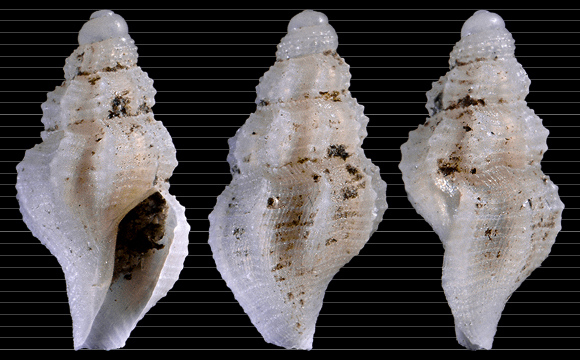(Philippi, 1844)
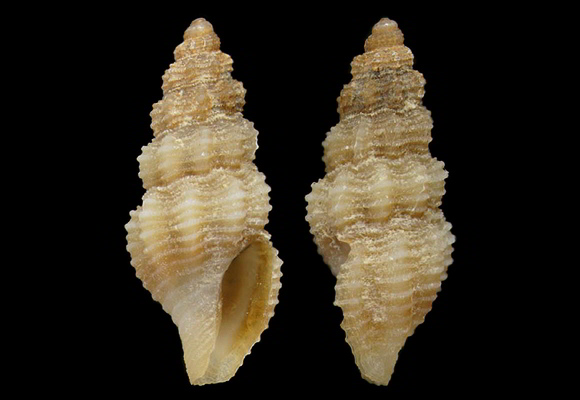
Original taxon: Pleurotoma brachystomum.
Synonym: granulifera. Some named variants.
10-15m deep, La Goulette, Tunisia. 4,8mm. Original pictures provided by M. Antit for WoRMS – (CC BY-NC-SA).
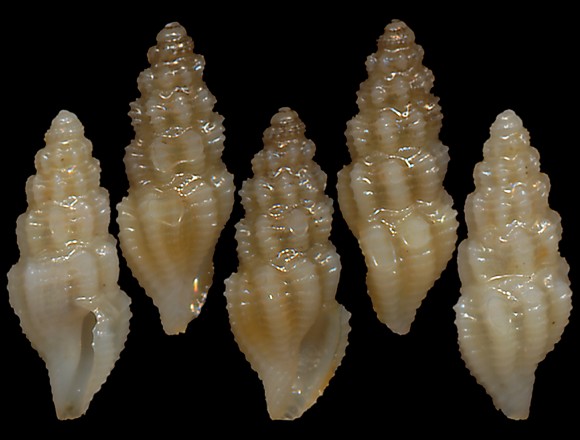
« Testa turrita, fulvo-fusca; anfractibus convexis, superne angulatis, striis elevatis transversis; costis longitudinalis elevatis novem, ad suturam evanescentibus; apertura oblonga, dimidiam spiram vix superante; cauda brevissima; labro acuto. […] Anfractus 8-9, propter costas versus ipsam suturam evanescentes subangulati, striis elevatis (circa 6-8 in anfractu penultimo) scabri; costae plicaformies, elevataee, interstitiis aequalis. Color rufus ad fulvum transiens. » – R. A. Philippi: Enumeratio molluscorum Siciliae… II, p.169.
Above and below: 80m deep, Hvar channel, Split-Dalmatia Comitat, S. Croatia. 4,5mm.
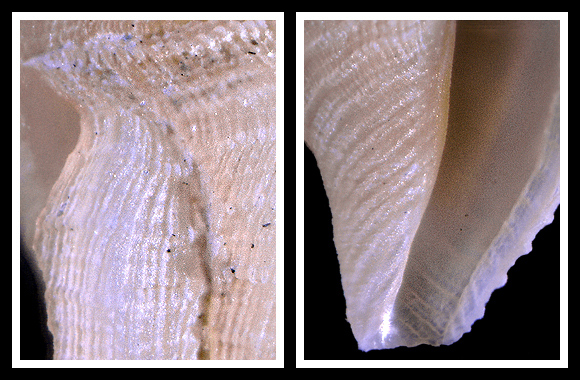
« Shell cylindrical, and pointed at each extremity, solid, nearly opaque, of a rather dull aspect. Sculpture: strong, broad, rounded, and rather prominent longitudinal ribs, from 7 to 9 on each of the last three whorls; they extend to the base, but not quite to the suture, the space below which is strongly and spirally sculptured ; the whole surface (except the apex) is covered with thread-like spiral ridges, which are finely and closely reticulated by microscopic longitudinal striae, making the crests of the principal ridges (especially of those below the suture) beaded and the surface roughened; these ridges are more or less wavy and of different sizes, the larger and more conspicuous numbering about 15 on the body-whorl, 5 or 6 on the next whorl, and decreasing upwards; the third whorl has several minute curved striae in the line of growth, their interstices being pitted, or the striae granulated, by the intersection of four or five equally minute spiral striae; the top whorls are smooth and glossy. » – J. G. Jeffreys: British conchology vol. IV, London 1867, via BHL.
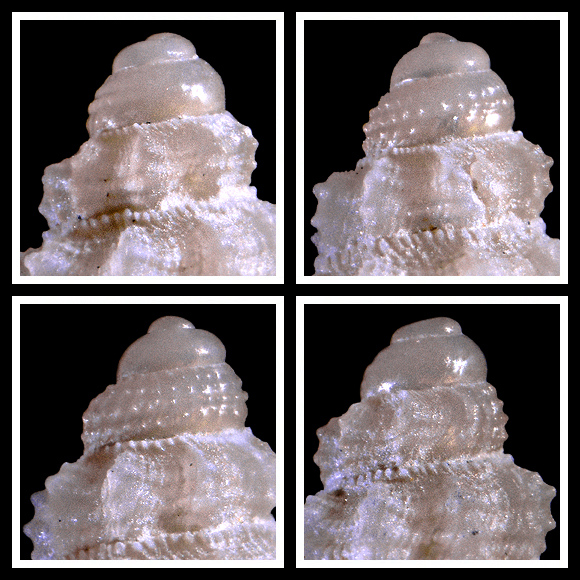
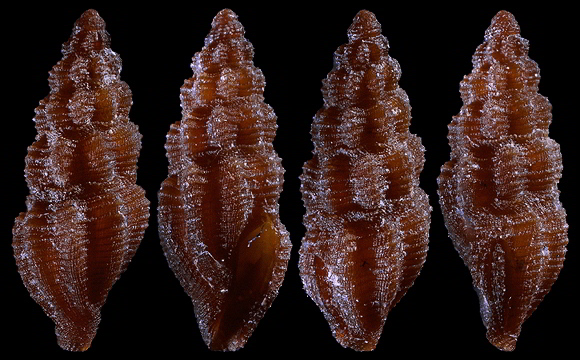
« Colour yellowish-white, orange, or occasionally deep reddish-brown; paler specimens sometimes exhibit traces of a broad orange band below the periphery. Spire turreted, and gradually tapering to a somewhat abrupt and blunt point. Whorls 8-9, moderately convex, somewhat flattened or shelf-like at the top, and angulated by the ribs; the last whorl occupies six-elevenths of the shell. Suture deep. Mouth narrow, compressed and acute-angled above, and broader in the middle; length nearly four-elevenths of the shell. Canal short, straight, and wide, expanding at the extremity in full-grown specimens; basal notch obliquely incurved. Outer lip flexuous, slightly bent inwards; edge sharp and muricated by the extremities of the spiral striae. Labial notch small and short, situated on the shelf-like ledge at the top of the body-whorl. Inner lip retired, finely polished. Pillar short and nearly straight. » –Ibid.
Large dark specimen collected at 8m deep, in detritic, Bodrum, Muğla province, SW. Turkey. 5,1mm.
